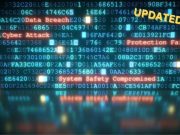
Ed. Note: As children across the state of Washington begin to return to in-person classroom learning, the advice offered by Dr. Lori Lynass, Executive Director of Sound Supports and a task group leader for the state’s Office of the Superintendent of Public instruction, is more timely than ever. We are reposting her salient insights as the first lesson to learn at this pivotal time.
In the global learning laboratory that has been our shared, realtime classroom for grappling with a worldwide pandemic, each of us — adult, parent and child — has been a student.
– We’ve learned that no nation-state on this planet can exist in isolation, walling itself off from the rest of the world. As a slogan, “America First” came to represent our ranking in the number of coronavirus deaths inside our borders compared to every other country on earth.
– We’ve learned that face masks are not a masquerade for any one political party but a means of blocking the transference of an unrelenting virus. Face shields or eyewear are better still if the other person is not wearing a mask. Covid-19 can also hang in the air for several minutes like an ominous cloud. A mask acts like an umbrella.

– We’ve learned that going “back to school” has taken the form of a.) full-time, continuous learning from a remote, “home-based” location, b.) a hybrid model of part-time in-classroom and in-home learning, or c.) full-time attendance in our schools, depending on the school district and infection rate. Thus far, most major cities and surrounding suburbs in Washington state had opted for the remote or hybrid system.
Just as a healthy economic recovery in America now hinges on a unifying commitment by all of its citizens with mutual respect for others’ health and safety, creating a productive environment for learning must transcend the distractions and disruptions of a polarized political climate. The most important lessons we need to learn are ones of tolerance, empathy and cooperation. America’s emotional intelligence will determine our success or failure.
SEL Fosters a More Equitable Society
Forget the “3-R’s.” The first day of a new school experience —post Covid-19 — starts with three letters — S-E-L — for social emotional learning.
With Social and Emotional Learning, the lessons we teach our children can be transformational. Each SEL lesson can motivate our communities to build a more equitable society, our kids to become better citizens, and create a more meaningful sense of belonging, collaboration and compassion.
When every student can build on a foundation of self-respect and positive regard for their peers, we can foster more successful outcomes at all levels of primary and secondary education.

The state of Washington has a champion for Social Emotional Learning in the personage of Dr. Lori Lynass (pronounced like Charlie Brown’s best friend “Linus”).
Dr. Lynass is the Executive Director of Sound Supports and is a member of the State Leadership Team for School Climate Transformation for the Washington state Office of the Superintendent of Public Instruction.
With over 22 years of experience in the field of education, she has worked directly with over 1000 schools in 100 districts and four state departments of education on their implementation of academic and behavioral systems.
Previously Dr. Lynass has been the Executive Director of Northwest PBIS and a research scientist and adjunct professor at the University of Washington. She has also overseen and coordinated grants related to academic and behavioral Multi-tiered Systems of Supports in schools and actively disseminates her insights through presentations and publications.
Learning How to Think, Not What to Think
According to CASEL, the Collaborative for Academic Social and Emotional Learning, SEL is “the process through which children and adults understand and manage emotions, set and achieve positive goals, feel and show empathy for others, establish and maintain positive relationships, and make responsible decisions.”

The five core concepts of SEL are:
Self-Awareness Self-awareness is the ability to recognize and name personal emotions. It also includes the ability to understand your own needs, as well as your strengths and limitations. This awareness of self is crucial to early school success. When children have an awareness of their own emotions, thinking, and behavior, they have a better chance to succeed in school, life, and work (Galinsky 2010).
Self-Management Self-management is the ability to regulate emotions and behaviors so that goals are achieved. It also involves persevering with difficult tasks and in complex social interactions. By age 4, children can begin to self-regulate by anticipating what to do and changing their responses.
Responsible Decision Making When young children learn to make positive choices about their personal and social behavior, they are making responsible decisions. Focus in the classroom and school community needs to be placed on problem-solving, reflection, perceptive thinking, self-direction, and motivation skills that will contribute to lifelong success (Adams and Hamm 1994).
Relationship Skills To be successful in school, children need to be able to form positive social relationships, work together, and deal effectively with conflict. Research suggests that when children are intentionally taught social skills, given opportunities to practice, and provided guidance in teachable moments, they develop positive peer relationships, acceptance, and friendships (Dunn and McGuire 1992).
Social Awareness. Social awareness is the ability to understand what others are feeling and have the understanding to take their perspective. Theory of mind is the ability to understand how different beliefs, motivations, moods, and levels of knowledge affect our own behavior as well as the behavior of those around us. Researchers also refer to social awareness as the development of empathy, which is the response we have when we are able to recognize and understand another’s emotions. Empathy plays an important role in relationship to academic and emotional success.
A New Relationship with Learning
Positive emotions can enable us to generate an active interest in learning and sustain our engagement in it. Conversely, unmanaged stress and poor regulation of impulses interfere with attention and memory and contribute to behaviors disruptive to learning.
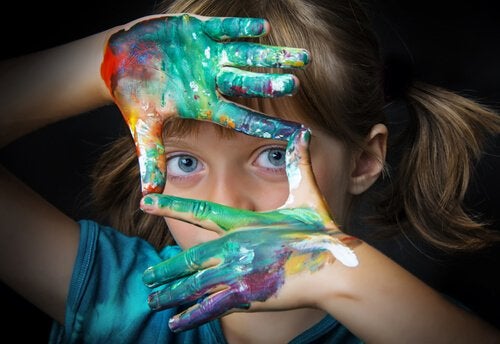
Learning is an intrinsically social and interactive process. It takes place in collaboration with one’s teachers, in the company of one’s peers, and with the support of one’s family. Relationships are the engine of learning.
The Seattle-based Committee for Children has aggregated research that found SEL programs …
- Improve academic outcomes
- Prevent bullying
- Return $11 for every $1 invested
- Have long-lasting, positive effects on people’s lives
As president Barack Obama eulogized at the funeral of congressional freedom rider John Lewis, “This is not the time for turning on each other but for turning towards one another.”
We asked Dr. Lynass to share her insights on how Washington students, their parents and their teachers should prepare to go back to school in the post-Covid era.
Back to School: When, Where, Why and How
Seattle24x7: Welcome, Dr. Lynass. Our hometown heroes at Amazon.com have a company motto: “It’s Always Day 1.” The sentiment seems especially pertinent to the reopening of our schools in the midst of the Coronavirus crisis. Is this moment in our history a “reset opportunity” for education? Is this a chance to rethink or redesign certain methodologies, make schools safer, learning more individualized, and systems more integrated between online and offline?
Dr. Lynass: Yes, this is the perfect time to rethink and reset our educational systems. Not only because of the new opportunities to use technology, but more importantly by making our educational systems truly equitable for all learners. We have a great opportunity as we have had to pause much of what we know as traditional schooling.

We can use this time to examine the inequities in our educational system that continue to widen the opportunity gap for our students of color and those with disabilities. Our systems have failed too many students for too long. Covid and the recent protests around Black Lives Matter have created a visible platform for positive change.
With technology integration, it is also a great opportunity to make our schools more 21st learning environments growing the 21st century readiness skills for students. Many schools are often so behind with technology and their use of it, so kids may not be getting the needed skills to use in college and careers. This is even more prevalent in our smaller districts or those lacking the same financial resources of other districts.
Seattle24x7: You recommend that the first three weeks of school be non-academic and focused on Social Emotional Learning, then moving forward about 50/50 until week 7 and then more can shift to academics. Could you explain the reasons why?
Dr. Lynass: Starting off the year with a focus on building relationships and making sure kids feel safe and supported in schools is important in any year. When educators focus on this first, they are more likely to build trust with students who are then more open to being pushed academically. Kids (and adults) tend to resist learning from people they do not like and feel connected to.
How Washington State’s 2020 Teacher of the Year Supports Communication at Home

Teacher of the Year
Amy Campbell is a teacher of students with significant learning challenges at Helen Baller Elementary School in Camas, Washington and the 2020 Washington State Teacher of the Year.
Amy Campbell: In my classroom and in my school community, we focus on providing accommodations, modifications, and strategies as ways of overcoming barriers created by disabilities so that we can create opportunities for access and engage all of our students in learning.
When COVID-19 hit, I realized that we haven’t necessarily given enough information for parents to deliver supports at home. Now, there has been a shifting of roles. Our team is working with families to prioritize what direct services we need to provide at school and what supports families can provide at home. We need to make sure we‘re getting the right materials and information to families so that they can feel successful doing what we do to support their child’s learning at school. I want families to feel like they have the skills, abilities, and resources to be able to implement the same supports at home that we provide at school.
What were some of your initial efforts to support your students and their families learning at home?
Amy Campbell: I started making YouTube videos on March 14. After we got out of school, I started filming right away. I love being able to make YouTube videos of me teaching or just me talking to the camera with a few ideas in mind. I wanted my presence to be available to my students as a comfort and as a familiar face. They could be in my classroom with me even if they weren‘t physically there.
I also wanted to take time in these videos to show the strategies, accommodations, modifications, and behavioral supports that we use with kids in my program every day to demystify and model for families. It’s a way of showing families that we are not perfect—we’re just trying, too.
What advice would you give to other teachers who want to create digital resources for families?
Amy Campbell: The thing that helped me was not picturing the world watching but picturing my students watching. When I’m making a YouTube video, I imagine that camera is one of my students so I remember to put in a sensory breaker or set a timer. I may not [be] feeling comfortable teaching in front of a crowd of people, but I will do it for my students every week. [24×7]
Last year, in-person school for most students, ended abruptly. Kids did not get to really have closure with their staff and peers. Many kids, especially those whose families lost jobs, moved and/or had significant life changes. Some students have also lost loved ones to Covid.
All of this has created great stress for kids and spending time making sure kids have tools to handle stress and who feel good about coming back to school, will be critical.
My own two kids will start in new schools this year as a new middle schooler and new high schooler and will now do this remotely. It’s going to be a tough transition and both my spouse and I are educators, so we have some advantage.
Seattle24x7: How should we think about grades K-12 in terms of the relative degree of impact when comparing face-to-face vs. remote learning? It would seem that things change dramatically in Middle School and then again in High School when students become more computer literate.
Dr. Lynass: I am amazed at how adept even young kids are with technology and problem solving. This certainly increases as kids age. But probably the biggest negative impact of remote learning is that kids are not getting the needed social and emotional skills or what we would call the soft skills. These skills are just as important in obtaining and keeping a good job post high school. If students are not in school, its hard to be learning these skills.
For kids who have traditionally been homeschooled, their parents and caretakers often sign them up for opportunities to gain these needed social skills. With all kids really being at home or interacting with only small groups of people right now, they are missing learning and practicing these skills.
Seattle24x7: While there is no substitute for the interpersonal dynamic between teachers and students, and between students and their peers, the new mode of remote, interactive education would seem to offer some unique advantages. Examples might be: self-paced learning, custom content that is tailored to skill levels, and heightened engagement with well-produced content for students who may otherwise be distracted or unable to follow along.
Dr. Lynass: Yes, you are correct that while you lose the ability for personal interaction, there are some great benefits in an online education and there are some students, who enjoyed learning remotely. There is a great opportunity for school districts to be able to shift learning online for students.
Most districts don’t have dynamic platforms like Teachable or Kajabi that would be needed to create more self-paced individualized courses, but there are already virtual schools that exist like the Washington Virtual Academy (https://wava.k12.com/) that are more adept at virtual instruction.
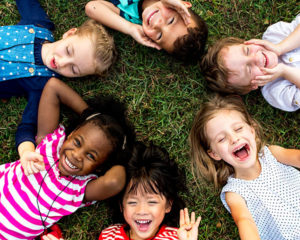
This can be especially helpful for students who might not be able to attend school due to an illness or disability or to help high school age students who need credit recovery to graduate on time.
Seattle24x7: A recent college study found that 95% of students bring their phones to class every day, and 92% use their phones to text message during class time. Do phones help students learn?
Dr. Lynass: Like any piece of technology, a phone can be seen and used as either a tool or a toy. As long as educators set clear expectations for how kids can use phones in their classrooms, they can be a powerful learning tool. Just like many businesses have clear guidelines for staff around phone use, we can set these up for students as well. I train mostly adults these days and I see adults texting during my classes. This level of instant access is just part of our culture.
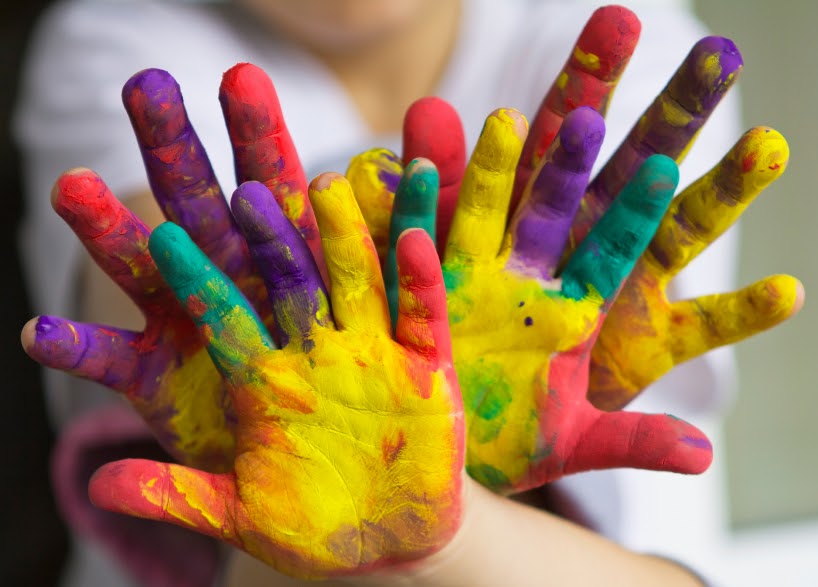
Seattle24x7: The Office of the Superintendant of Public Instruction (OSPI) Plan emphasizes digital access as a top priority. At what age should portable/mobile digital devices be introduced to K-12 students as learning tools? Do we as a society have an obligation to outfit students with these learning tools as well as broadband Internet access at home, if they cannot afford to purchase them on their own?
Dr. Lynass: Modern technology can empower kids to take ownership of their education and prepare them for the post-school world. I see many schools where even kids in Kindergarten are working on basic computer access skills.
The technology and programs that can help kids learn reading and math skills, can be a very helpful tool for a teacher managing 25-30 kids at a time and provide access to information kids may need. That being said, I think younger students need to focus more on basic social skills and academic foundations, which can be done without each kid on a computer.
I do think we as a society should make sure each kid has at least a chrome book and Internet access if they are expecting them to do remote learning. It is our responsibility to provide these for kids who do not have the financial resources. I think our government could easily make basic Internet free for everyone and many people have lobbied for this for years. It is a great barrier to equity.
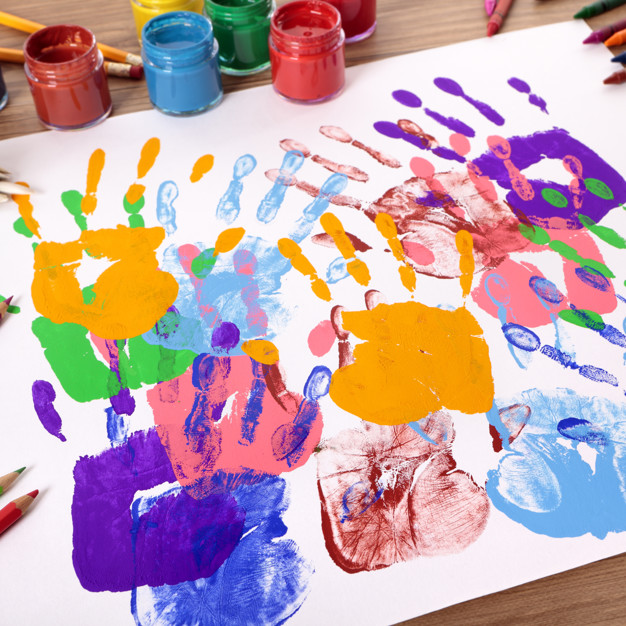
Seattle24x7: What can educators be doing now, or be doing differently in engaging families during school facility closures that might help address issues of stress that could be happening in homes and with students?
Dr. Lynass: We have had many districts engage with us on providing training for families on dealing with stress and trauma in the home for both the adults and the students. We can anticipate seeing great impacts of trauma as students return to school this fall.
The Washington Department of Health forecasts that “impacts from the COVID-19 outbreak and related government actions will likely cause a surge in behavioral health symptoms across the state (www.doh.wa.gov, June 2020).” Schools can start to prepare now by thinking about how to proactively identify students who need supports and ways to partner with outside agencies such as Children’s Hospital or The University of Washington’s Forefront Suicide Prevention who can link them to needed resources.
Seattle24x7: How has the parental role in education changed in the Covid-19 era? What are the realistic alternatives or resources for remote learning when and if the parents have to work?

Dr. Lynass: Parents are having to assume a huge support role if their students are learning remotely. I try to make sure and tell parents, that what we all just went through was not home schooling, which a parent carefully plans out, but instead it was crisis schooling that we all got thrown into.
Right now we don’t have too many alternatives to what our public schools are providing, but our schools are working so hard to make it the best they can for students. The majority of teachers also don’t want to be providing remote learning and will tell you that this past spring was probably the toughest year they had teaching.
Most districts have now pulled together some great lists of resources for families. Families can also contact their school’s counselor, teacher or family advocate for resources. So many organizations have also pulled together resources to help parents with this navigation and those can be found online and on our website at www.soundsupportsk12.com
“SEL is Good for Business”

Dan Kranzler’s eFund LLC has been a fixture on the Northwest’s Venture Capital and Angel Financing scene for over 15 years, investing in wireless and technology startups. What is not as well known is that profits from the fund go to children’s charities through the Kirlin Charitable Foundation and its offshoot, Seeds of Compassion, dedicated to Social Emotional Learning.
Kranzler: “Children have a tremendous social capacity. But they need help developing it and staying open so they can become confident learners and, ultimately, successful and well-adjusted adults. Open people with social-emotional skills are the kind of people that most businesses need and want to hire. This is how the best collaboration, creative thinking, and problem solving gets unlocked. Of course, companies have to have social-emotional practices, too. This is part of “conscious capitalism” (another long and interesting subject), with the objective to make employees feel listened to, comfortable, secure, valued, and respected.”
“If we can have compassionate schools, we can have compassionate communities, companies, and society. In all cases, social-emotional learning can help enrich people. And if students and employees can feel a deep sense of satisfaction with the world in which they live, then that world is going to be a much better place for all of us in the end—a world identified first and foremost by the grace of its empathy and compassion,” Kranzler said. [24×7]
Seattle24x7: The stakes seem higher than ever in an environment where behavioral issues can arise? What remediation should occur for students who resist health and safety requirements?
Dr. Lynass: First, schools have to make sure they have set and taught kids clearly what the expectations are and why they are important. This will need to be a big focus of the first few weeks.
We need to layer in acknowledgment for kids, so they know when they are showing the desired behavior.

We also have to be realistic and provide breaks, for example where kids may need to go outside, stand 6 feet apart and take their masks off for a few minutes. Any adult knows that wearing the masks can be hard, so we need to have empathy. Kids are also not always able tojudgehow far apart 3-6 feet might be, so visuals can really help too.
I practice and believe in restorative justice principals. Behavior is communication for kids, so our job is to try and make sure we understand why a kid may be resisting and collaboratively problem solve with the kid and their families. Punishment should not be a solution. We know punishment just tends to drive up the behavior and to break the positive relationship that a student may have with the school. [24×7]
Who is Sound Supports?
The mission of Sound Supports is to provide schools and families with the needed supports so all students can experience success. By focusing on systems, data, practices and outcomes, schools can learn how to best serve all students while supporting staff too. Sound Supports provides onsite training, coaching and evaluation to schools and school districts in the areas of Multi-tiered Systems of Supports (MTSS), Behavior Based Interventions and Supports, Restorative Justice Practices and Special Education.[Sidebar: Amy Campbell]
Sources
SEL Programs Studied Return $11 for Every $1 Invested, Belfield, C., Bowden, B., Klapp, A., Levin, H., Shand, R., & Zander, S. (2015). The economic value of social and emotional learning. New York: Center for Benefit-Cost Studies in Education, Teachers College, Columbia University.
SEL Improves Academic Outcomes, Durlak, J. A., Weissberg, R. P., Dymnicki, A. B., Taylor, R. D., & Schellinger, K. B. (2011). The impact of enhancing students’ social and emotional learning: A meta-analysis of school-based universal interventions. Child Development, 82(1): 405–432.
Public Health: The Relationship Between Kindergarten Social Competence and Future Wellness, Jones, D. E., Greenberg, M., and Crowley, M. (2015). Early social-emotional functioning and public health: The relationship between kindergarten social competence and future wellness. American Journal of Public Health, 105(11): 2283–2290. doi:10.2105/AJPH.2015.302630
The role of social-emotional learning in bullying prevention efforts.Theory Into Practice, Smith, B. H., & Low, S. (2013). 52(4), 280–287. doi:10.1080/00405841.2013.829
SEL Has Long-Lasting, Positive Effects on People’s Lives and Well being, Kautz, T., Heckman, J.J., Diris, R., ter Weel, B., Borghans, L., Fostering And Measuring Skills: Improving Cognitive And Non-cognitive Skills To Promote Lifetime Success, National Bureau Of Economic Research, commissioned by the Organisation for Economic Co-operation and Development (OECD)





